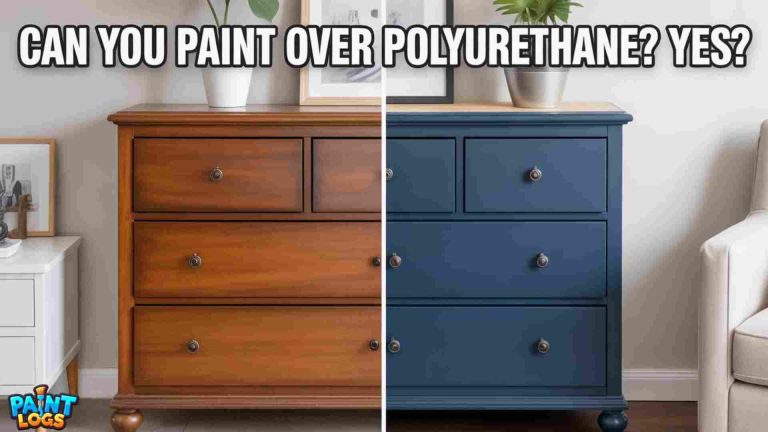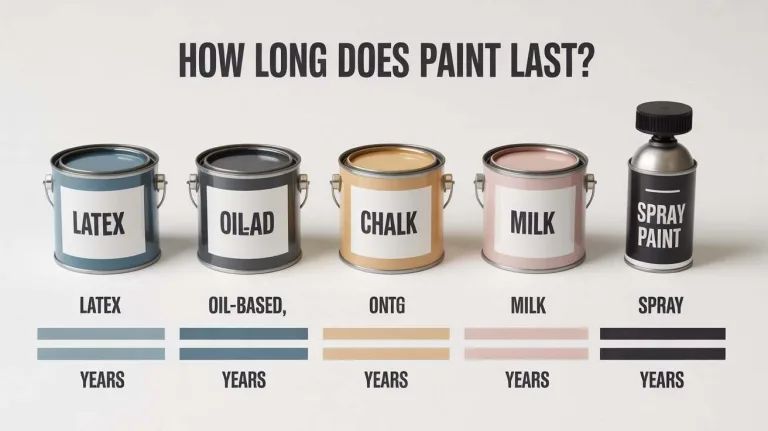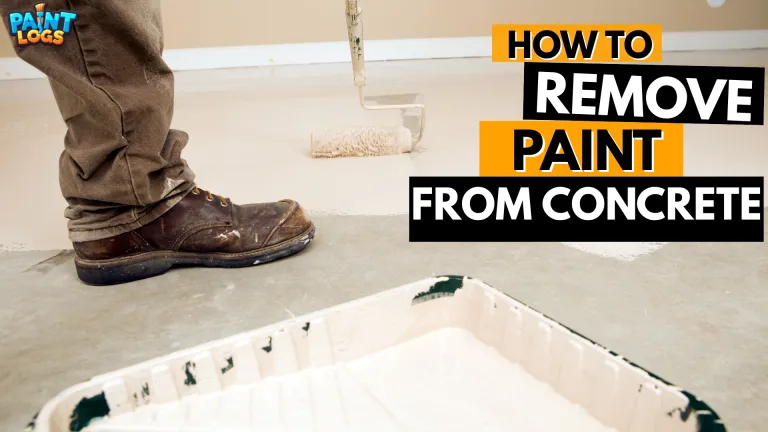To save oil paint fresh for later use, scrape leftover colors onto a clean palette or into small airtight containers. Cover your palette with plastic wrap, foil, or a fitted lid to block air. For longer storage, seal paint in small jars or use empty paint tubes. You can also slow drying by placing the palette in the freezer, which keeps the paints workable for days or even weeks.
Oil paints are famous for their slow drying time, which is one of the reasons artists love them. That flexibility allows for smooth blending, subtle transitions, and corrections over hours or even days. But there’s a flip side: when you’ve spent time mixing the perfect shade, you don’t want to see it wasted or dried up by the next morning.
Many artists end up painting too long in one sitting because they’re worried the colors won’t survive until tomorrow. That rush often leads to fatigue, mistakes, or simply burning through more paint than necessary.
The good news? There are simple, proven methods to store leftover oil paint so you can return to your canvas fresh, without losing time, money, or creativity—and more importantly, to prevent oil paint waste.
This guide explains how to save oil paint for later:
Why Oil Paints Dry (and How to Slow It Down)
Unlike acrylics or watercolors, oil paints don’t dry by evaporation. Instead, they go through a process called oxidation: the oil binder reacts with oxygen in the air, forming a solid film over time. This is why paint left uncovered will eventually form a skin on top, and even sealed paint can slowly harden if exposed to oxygen, light, heat, or humidity.
Knowing this helps explain why certain preservation tricks work. If you can reduce oxygen exposure, lower the temperature, or introduce antioxidants, you can extend the life of your mixed colors dramatically. That’s where methods like freezing your palette, wrapping paint in foil, or using clove oil come into play.
Related: Acrylic vs Oil Paint for Beginners: Which One Should You Start With?

The Best Ways to Save Oil Paint for Later
There’s no single “right” way to store oil paint—the best method depends on how much paint you want to save, how long you need to keep it fresh, and whether you’re working in a studio or outdoors. Below are the most effective, time-tested options.
The Freezer Method
One of the simplest and most reliable approaches is to put your palette in the freezer. Oil paint doesn’t freeze solid like water, but the cold dramatically slows oxidation. Cover your palette with plastic wrap, foil, or an airtight lid, then place it in the freezer. At about –20°C (–4°F) (the freezing point of linseed oil), drying nearly halts. Since most home freezers run at –18°C (0°F), they’re cold enough to achieve nearly the same result.
This method is best for artists who want to store leftover paint for several days or even weeks. Many use a portable palette, pochade box, or even a baking tray so it slides easily in and out of the freezer. When you’re ready to paint again, remove the palette and let it warm to room temperature—the paint will soften and become workable within minutes.
The Water Method
Some artists store paints under a layer of water. This technique works best with small trays or compartment boxes, such as fishing tackle organizers or sewing-supply containers. By covering the paint completely with water, you block oxygen and slow drying.
It’s a short-term or temporary paint storage solution (usually just for a couple of days), but handy if you don’t have freezer space.
Plastic Wrap and Foil Packets
A classic, low-cost method is to wrap leftover paint individually in plastic wrap or foil. By pressing the wrap tightly around the paint, you exclude as much air as possible. These packets can be left out overnight or placed in the freezer for longer preservation.
Many artists also label each packet—“sky blue,” “skin tone,” or “background”—to avoid confusion when returning to a painting.
Clove Oil Preservation
For a more advanced solution, some artists rely on clove oil, one of those professional oil painting techniques that can extend the life of paint for a week or more. Clove oil contains eugenol, a natural antioxidant that slows oxidation. A few drops on a cotton ball, placed inside an airtight container with your palette, will keep paints soft.
Be careful not to let the oil touch the paint directly—the fumes are what do the work. Too much, however, can keep your paint tacky for days.
Advanced Storage Hacks
Some painters experiment with technical fixes such as vacuum-sealed containers, which remove oxygen entirely, or spraying a thin layer of linseed oil across the palette.
These methods can be useful for long-term paint storage or large batches of mixed color, though they require extra care. Always remember the fat-over-lean rule, since adding more oil can affect drying times.

Storage Containers & Palette Options
Choosing the right container makes a big difference in how well your leftover paint survives. Each type of palette or storage solution has its own strengths, and many artists try different setups before finding what works best for them.
Glass palettes are a studio favorite. They’re smooth, easy to scrape clean, and resistant to staining. The downside is their weight and fragility, and they need to be covered carefully with plastic wrap or a fitted lid to keep paints usable overnight.
Wooden palettes are lightweight and traditional, especially for plein air painting. The porous surface, however, tends to absorb oil, which makes them less effective for mixed colors storage unless you transfer leftover paint to jars or tubes at the end of a session.
Plastic palettes are inexpensive and portable, often sold with fitted lids. They can stain over time or react with solvents, but they’re practical for beginners or for painters experimenting with storage methods.
If you want the most reliable solution, consider airtight palettes from brands like Masterson or Mijello. These are designed specifically to block out oxygen, allowing your paints to stay fresh for days or even weeks. While pricier than improvised solutions, they’re a solid investment for painters who regularly save paint.
For smaller amounts, many artists scrape leftover colors into tiny jars, cosmetic pots, or sample cups. This is especially useful for mixed colors storage when you’ve created a custom tone you’ll need again. Larger mixes, such as portrait skin tones or background washes, can be preserved in empty aluminum paint tubes. Once sealed, the paint keeps almost as well as when it first came from the manufacturer, and these tubes are also handy for paint medium storage if you make your own blends.
A practical tip for tube care: always compress tubes from the end as you use them. This pushes paint forward, minimizes trapped air, and extends the paint’s effective oil paint shelf life.
And don’t overlook DIY options. A well-sealed food storage box, recycled glass jar, or even a pochade box can double as an airtight palette. Adding a strip of weather sealing around lids can improve closure and reduce oxidation.

Tips for Storing Oil Paint Between Sessions
How you store your paints depends on how long you need them to last. Think of it as choosing between temporary paint storage and long-term paint storage.
Temporary Paint Storage (Overnight to 2–3 Days)
For short breaks, a quick wrap in plastic film, foil, or an airtight lid is often enough. Many painters also tuck their palettes into the fridge or freezer overnight. The lower temperature slows oxidation just enough to keep the paint pliable, so when you return the next day it’s still fresh.
Medium-Term Storage (Up to 1–2 Weeks)
If you’ll be away longer, it helps to combine methods. Scrape paint into small jars, press out air pockets, and store them in the freezer. Alternatively, an airtight palette with a cotton ball dabbed in clove oil can keep colors soft for over a week.
Long-Term Paint Storage (Several Weeks or Months)
When you know you won’t be painting for a while, durability matters most. Large batches of custom mixes are best stored in empty aluminum tubes, which can last for months if sealed well. Even with the freezer method, expect some skinning on the surface after a few weeks, but you can usually peel this off and use the paint underneath.
Labeling and Workflow Tips
Labeling your jars, foil packets, or frozen palettes—“sky blue, canvas A” or “portrait skin mix”—saves time and avoids confusion. This simple habit is especially useful if you’re working on multiple paintings at once or across staggered sessions.
Storing Brushes and Tubes
Preserving oil paint isn’t just about the palette; it’s also about how you handle your brushes and tubes between sessions.
Storing Brushes Between Sessions
If you’re painting again the next day, there’s no need to scrub brushes completely clean. Wrapping the bristles tightly in foil or plastic wrap prevents air from reaching the paint. Some artists dip brushes in solvent or linseed oil overnight, though this should only be for short-term use, since it can damage bristles over time.
For breaks longer than a day or two, a full clean with solvent and soap is the safer choice. Proper cleaning oil paint brushes helps extend brush life and keeps bristles in good condition.
Caring for Paint Tubes
Oil paint tubes are built to last, but only if treated properly. Always wipe paint from the threads before sealing to prevent caps from sticking. Store them in a cool, dark place, away from heat and humidity, which can shorten the paint’s life. Knowing how to read labels on oil paint tubes also helps, since labels reveal drying speed, binder type, and pigment strength.
Many artists keep tubes capped down to limit air exposure. If a tube is half empty, transfer the paint into a smaller empty tube or an airtight jar—this reduces oxygen inside and extends its effective shelf life.

Oil Painting Storage Tips: Preventing Waste and Preserving Quality
Oil paint is expensive, and nothing feels worse than scraping dried lumps of unused color off your palette. The good news is that a few habits can help you prevent oil paint waste and get the most out of every tube.
Dealing with Skinning Paint
Even with airtight storage or freezer use, you may still find a thin skin forming on the surface. Don’t throw it away—just peel off the skin with a palette knife, and you’ll usually find perfectly workable paint underneath. Trying to stir dried skins into the rest of the paint only creates a gummy texture.
Mixing Leftovers Into a Neutral Color
When you’ve got small piles of leftover paint that can’t easily be stored, combine them into a single “neutral” or grayish tone. This mix may not match your original shades, but it’s excellent for toning canvases, blocking in shadows, or underpainting. Many professionals rely on this “mystery gray” for practical use.
Maintaining Paint Consistency
Sometimes stored paint feels stringy or sticky. A drop of linseed oil or medium will usually restore its buttery texture. Just use caution—too much oil can interfere with drying times and upset the fat-over-lean rule.
Being Strategic With Color Mixing
The best long-term solution is prevention. Instead of squeezing out large piles of every color, start small and mix more only when you’re sure you’ll need it. This approach reduces leftovers, teaches better mixing accuracy, and makes storing what’s left easier.
Common Problems and Fixes
Paint Skins Over Overnight
A thin film forming overnight is normal if air sneaks in. Peel it away gently and continue using the paint beneath.
Clove Oil Keeps Paint Too Wet
If your paints remain tacky for days, you’ve likely used too much clove oil. Reduce the amount or keep the cotton pad further from the paint.
Freezer Storage Still Leads to Drying
If freezing isn’t working, the palette probably wasn’t sealed tightly. Wrap the whole palette in plastic film or transfer paint to jars before freezing. Remember that most home freezers run at about –18°C (0°F), which is cold enough to extend freshness but not to stop drying completely if air is present.
Traveling With Oil Paints
For plein air painters, portability is key. A pochade box with a sealed lid works well, or use small jars for mixed colors storage. If you’re flying, always pack oil paints in checked baggage and label them as “artist’s oil colors, non-flammable.” Airlines often restrict paints in carry-ons.
Accidentally Mixing in Dried Bits
If you scrape dried skins into the paint, the mixture will become grainy. Remove as much as possible and smooth the paint with a touch of medium. Avoid brushing dried fragments onto your canvas, as they compromise surface quality.
Conclusion
Oil paints are too valuable—both in cost and creative effort—to waste. By adopting smart oil painting storage tips, you can extend the usability of your colors, protect your investment, and paint at your own pace without rushing. Whether you rely on temporary paint storage like wrapping your palette overnight, or long-term paint storage using freezers, airtight palettes, or clove oil, the goal is the same: slow down oxidation and keep your paints fresh.
In the long run, these simple strategies do more than save money. They give you freedom to work with focus, avoid fatigue, and create stronger, more thoughtful art.
This guide has shown you how to save oil paint for later and how to store it properly so your colors stay fresh between sessions.
FAQs
How long can you keep oil paint in the freezer?
If sealed properly, paint can stay usable for at least a week, and sometimes up to a month. Home freezers run at about –18°C (0°F), which slows oxidation significantly. If a skin forms, peel it away and use the paint underneath.
Can you put oil paint in the fridge instead of the freezer?
Yes. Refrigeration works well for temporary paint storage (1–3 days), but the freezer is much more effective for longer breaks.
What is the oil paint shelf life?
Unopened tubes can last 10–15 years or longer if stored in a cool, dark, low-humidity place. Once opened, the shelf life depends on care—wipe the threads, compress tubes from the end, and avoid trapping air inside.
Is clove oil safe for all pigments?
Yes, as long as the oil never touches the paint directly. A cotton pad with a drop or two is enough. Overuse can cause paints to stay tacky for too long.
Can leftover paint be put back into the original tube?
It’s not recommended. Once opened, reintroducing paint risks contamination and trapped air. Instead, transfer leftover colors into empty aluminum paint tubes or airtight jars for better preservation.
What’s the best method for plein air painters?
For outdoor painters, portability is more important than long-term storage. A sealed pochade box or small jars of mixed colors work best. For air travel, always pack paints in checked luggage and clearly label them “artist’s colors, non-flammable.”
Can you mix old and fresh oil paint together?
Yes, you can mix old and fresh oil paint, but check the older paint first. If it has only skinned over, remove the dry layer and use the soft paint underneath. Avoid mixing dried or rubbery paint, as it can cause uneven texture and adhesion problems on your canvas.







